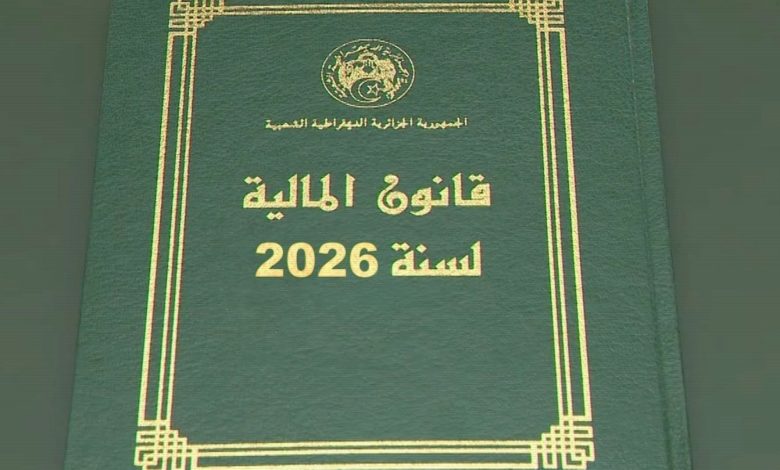Algeria Balances Tax Reform and Purchasing Power
Algeria’s 2026 Bill tilts to base-broadening over rate hikes; CL=F steady near low-80s while DZD=X around 130 supports disinflation. Credible enforcement could lift non-oil revenue >10% y/y and narrow the 2024 deficit by 3 ppt through 2026.

Algeria’s draft 2026 Finance Bill signals a pivot from windfall hydrocarbon dependence toward rules-based consolidation that protects household purchasing power without explicitly raising statutory rates on firms. The macro backdrop frames the stakes: real GDP growth is projected near 3.5% in 2025, consumer prices around 3.7%, and the 2024 overall deficit widened to roughly 13.9% of GDP after higher wage and capital outlays met softer hydrocarbon receipts.
With oil still the dominant fiscal anchor and external liquidity less forgiving, the Finance Bill functions as a credibility test on whether fiscal repair can proceed without suppressing domestic demand.
Mechanically, the strategy replaces headline rate hikes with base-broadening and enforcement. Measures likely include tighter VAT compliance, rollback of exemptions, formalization of cash-heavy activity, and progressive relief targeted at low-income brackets to preserve real consumption.
The revenue arithmetic depends on compliance elasticity, not higher rates: if digital administration and audit coverage lift effective collection by even 0.8–1.0% of GDP, the primary balance can improve without raising the average tax wedge on productive investment. That, in turn, lowers the crowding-out pressure associated with large cash deficits and reduces the need for central bank balance-sheet intermediation.
The growth-inflation mix remains sensitive to energy prices. Brent futures (CL=F) near the low-80s support budget receipts but sit below levels that fully offset 2024’s spending drift. Imported food and manufactured goods dominate pass-through risk; a stable dinar (DZD=X) around 130 per USD has limited second-round effects, but any sustained oil softness would test reserve adequacy and force sharper trade-off choices between subsidies and public investment.
The Bill’s purchasing-power pledge implies continued targeted support, yet the binding constraint is quality of spend: reweighting from universal subsidies toward time-bound, means-tested transfers would preserve consumption while freeing space for logistics, power, and water investment that lifts non-oil productivity.
The financing channel is pivotal because Algeria’s domestic bond market remains shallow with limited secondary price discovery, and the sovereign has no liquid eurobond curve. That structure elevates the importance of predictable cash-flow management and transparent issuance calendars to anchor local rates.
If the Bill credibly broadens the base and stabilises the primary deficit, sovereign risk premia embedded in bank term funding should compress, lowering the effective cost of capital for private borrowers. Conversely, ambiguous language or ad-hoc exemptions would keep term premia elevated and prolong reliance on administrative financing, raising medium-term inflation risk despite benign current CPI.
Sectorally, a neutral-rate, enforcement-heavy design can improve planning visibility for corporates. Manufacturing and tradables gain from fewer discretionary exemptions, clearer VAT refunds, and faster customs processing; services benefit from reduced informality that narrows unfair competition. However, if enforcement outruns facilitation—tight audits without refund discipline or payment predictability—working capital will tighten, and formal firms will absorb a de facto tax increase via delays and penalties.
The Bill’s investment signal therefore hinges on simultaneous delivery of e-invoicing, risk-based audits, and time-bound refund service levels, which historically determine whether base-broadening raises total factor productivity or merely shifts activity to the shadow economy.
Comparative experience from other hydrocarbon peers is instructive. Saudi Arabia’s VAT compliance drive and Oman’s base-broadening paired consolidation with targeted social protection while preserving capex pipelines. Algeria’s starting point differs—less diversified exports and thinner domestic capital markets—so execution risk is higher.
The policy equation still applies: credible enforcement plus predictable relief compresses sovereign risk premia, attracts longer-duration capital, and raises non-oil revenue buoyancy. Failure produces the opposite dynamic—investment hesitation, rising arrears, and higher term premia that nullify nominal tax neutrality.
For markets, the 2026 framework is a near-term test of fiscal and administrative capacity rather than a trading catalyst. With no liquid international curve, pricing signals will appear indirectly: tighter local term premia, improved supplier payment cycles, and steadier FX microstructure as non-oil import demand becomes more predictable.
Over the next 12–18 months, three indicators will confirm traction: non-hydrocarbon revenue growth exceeding 10% year on year; the overall deficit narrowing by at least 3 percentage points of GDP versus 2024; and consumer inflation stabilising below 5% alongside a stable DZD=X around current levels.
If these metrics align while CL=F holds near the low-80s, Algeria will have shifted from cyclical resilience to structural credibility, opening space for a gradual capex upshift and more durable growth in 2027. If not, the economy remains exposed to oil-price variance with widening policy trade-offs and muted private investment.





